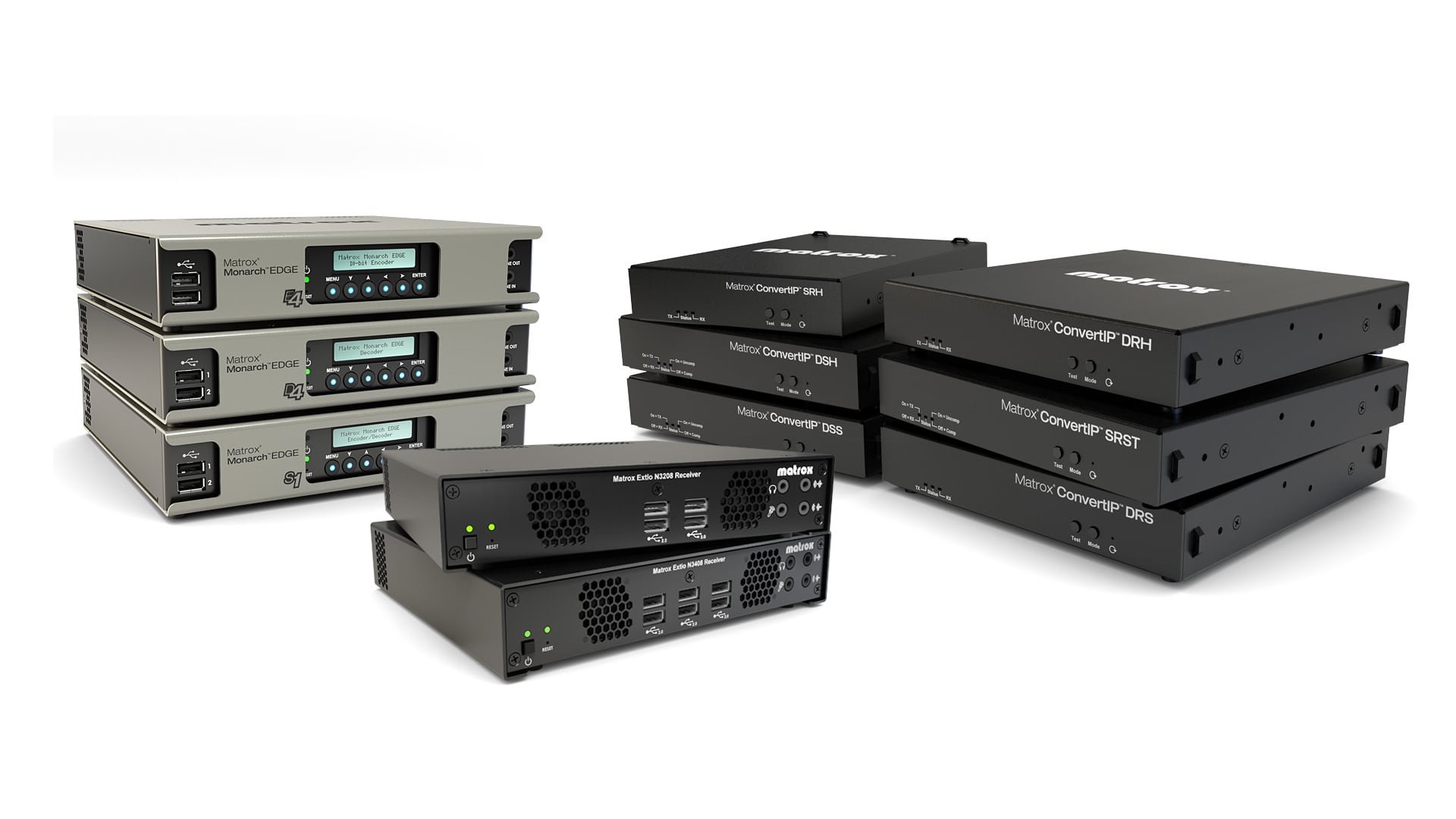
Highlighting the increasing importance of workflows in evolving IP deployments, Matrox has spent IBC demonstrating how broadcasters can use its tools and methodologies to deploy efficient and cost-effective on-prem and cloud-based live production workflows.
As part of that general effort, making its show debut is ConvertIP, a standalone SMPTE ST 2110 converter that integrates and converts ST 2110 IP signals. Usefully it enables broadcasters to confidently monitor ST 2110-20 and ST 2110-22 sources on HDMI or SDI monitors, making them one less thing that needs to be replaced immediately when transitioning over from SDI.
Elsewhere, the company has been majoring on remote, both remote productions and remote operations.
Equipped with built-in tally and talkback, 4K, and genlock support, the Monarch EDGE encoder and decoder appliances are purpose-built for remote production for sports and live events (REMI for US readers) and contribution environments. In combination with the GlobalM cloud-based SRT streaming platform, Matrox bills this as a cloud-based orchestration network offering a cost-effective approach to acquiring and sharing high-quality, low-latency contribution streams for REMI productions.
REMI is just the start of it though, and there’s a whole load of other remote workflows starting to gain traction in the industry as operators increasingly choose to work from off-site locations while controlling in-studio broadcast equipment where they can. Matrox’s Extio 3 IP KVM extenders facilitate remote access and connectivity for these distributed teams and personnel by delivering secure, seamless, and glitch-free 4Kp60 4:4:4 and up to quad 1080p60 4:4:4 video extension and switching support over IP. In addition, Extio 3 IP KVMs work over standard and existing one Gigabit Ethernet networks, usefully eliminating the need to invest time, labor, and financial resources to set up new infrastructure when resources are already likely stretched.
Tags: Production


Comments